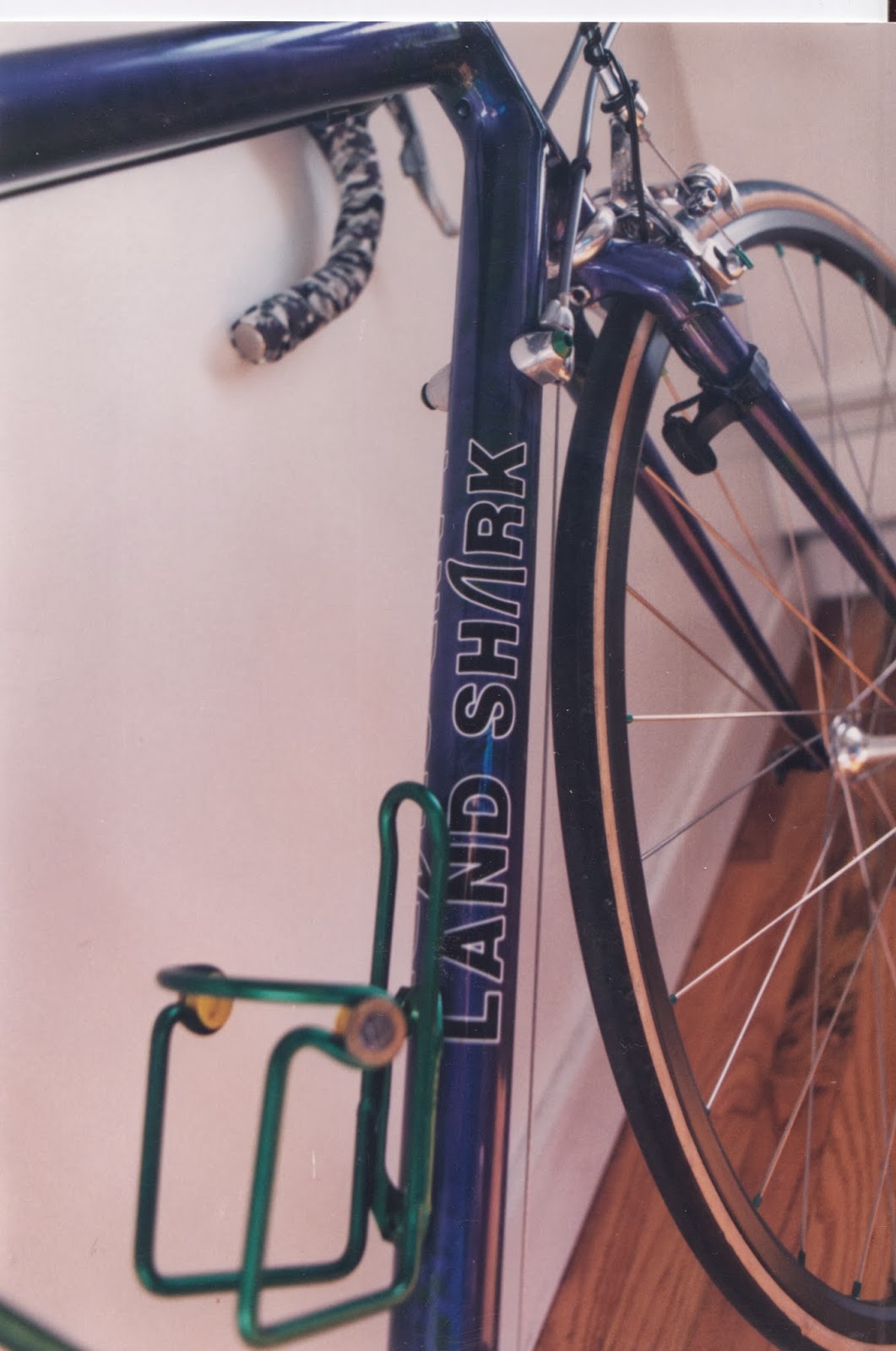Today I am going to recall another bike from a
respected one-man builder. Like my LandShark, it didn’t have his name on it. In fact, when I acquired the bike, it
didn’t have any name on it at all.
After deciding that my Raleigh Competition was too
big for me—and wanting a bike I could ride on paths without getting a mountain
bike (At the time, mountain bikes were still clunky.)-- I ended up with an
accidental conversion.
Frank, my old boss at Highland Park Cyclery, had a
Ross Signature frame. Now, you might
ask, “Since when was Ross a one-man operation?”
Actually, it never was. However, for
a time, they contracted builder Tom Kellogg to build a series of bikes that
would rival the best of any other builder.
Like Trek, Ross seemed to have designs on becoming the Great American
Bike.
 |
| A Tom Kellogg bike. |
In spite of its high quality and the sort of
clientele to whom HPC catered, the frame gathered dust. It may have had to do with having been
painted a color (grayish-green) nobody wanted. Also, the bike frame, which was built for
touring, didn’t have braze-ons for cantilever brakes, racks or shift levers (or
cable guides for bar-end shifters: STI
and Ergo were still a decade or so on the horizon). It also had only one pair of braze-on mounts
for a water bottle cage.
Frank sent the frame back and asked for
braze-ons. By that time, Kellogg was no
longer working for Ross. For all Frank or I
knew, the bits may have been brazed by whoever welded Ross kids’ bikes. The frame came back painted in a pewter
color, which I rather liked, and with the requested braze-ons: for a rack, a water bottle cage and
cantilever brakes. The latter were
exactly where they should have been on the frame—for a 26” mountain bike wheel.
The only problem was that the frame was built for
700 C wheels. So, the there was more vertical clearance between the seat stay
bridge or the front fork crown and the tires than on just about any other bike
I’ve ever seen.
That would have been great if it were possible to
ride large studded tires. However, that
wasn’t possible because the clearance between the chainstays (at the bottom
bracket) and the front fork blades was too narrow for a true off-road
tire. They could have accommodated, at
most, a tire 38C (1.5 inches) wide, which was still wider than most touring
cyclists (at least here in the US) were riding at the time.
So I set up the bike with some of the earliest mountain bike “slicks” from, if I recall correctly, Tioga. Later, when Avocet introduced their slicks with inverted treads, I switched to them: They may have been the best city/commuter tires ever made. And I installed fenders. There was enough space between them and the tire treads to ride a Worksman Cycle through.
I used that bike as a commuter and on a couple of
longer trips—including the one I took when I stormed out after an argument I had with Eva. A lot of people gawked at
it: It was the bicycle equivalent of a
platypus. But I really enjoyed it: Certainly, it turned out to be one of the
more versatile bikes I’ve owned. But,
after about two years, it met its untimely demise at the rear end of a taxi
behind Penn Station. (“And lead us not into Penn Station..”)
By now, you may be thinking what I’m
thinking: What if that bike had been a
650B conversion? Given the state of
bicycling and the bike business of that time (ca. 1986-88), I don’t think that
whoever brazed on those cantilever brake bosses had even heard of such a
size. Rims and tires of that size were
not available in the US at that time and were even, by that time, difficult to
find in Europe.
I tried to find a photo of that bike. It really was like nothing else you’ve seen
or ridden.
After I crashed it, I got the Miyata 912 I
mentioned in an earlier post. Both of those bikes were worthy companions to my
Colnago Arabesque.







